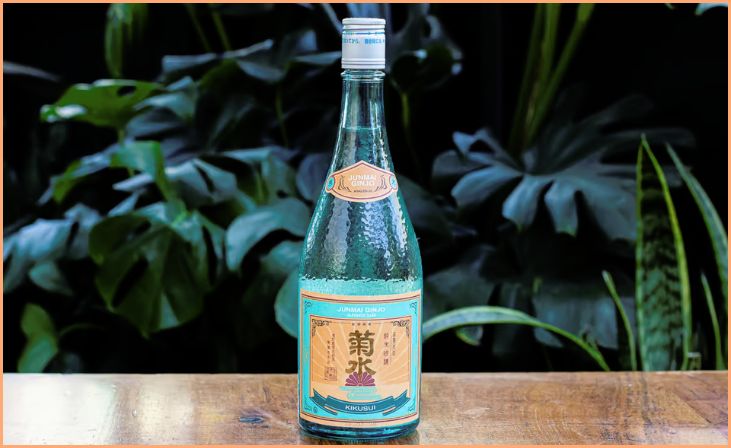In this article, you will come to know a brief review of, “What Does Sake Taste Like?” Sake is an alcoholic drink produced from rice. It seems incredible, right? But in spite of that, Sake is not the same as beer and other alcoholic beverages because, unlike beer, starch becomes alcohol in one go, while starch first becomes sugar and then alcohol.
The Sake (also known as Nihonshu in Japanese), introduced in Japan 2500 years ago, is a nutritious drink produced from fermented rice. Thanks to its extraordinary quality and increasingly popular trend in Japanese cuisine worldwide, this drink is offered in many drink outlets and restaurants so, if you want to know precisely what Sake is and What Does Sake Taste Like? check out the answers in this post!
What Does Sake Taste Like?
- If you are asking, What does Sake taste like? Then it is a combination of astringent and savory flavor. The acidity of Sake is generally lower than that of wine but higher than that of beer. As a result, it has an alcoholic content of 15%, which is higher than wine. Thus, the extract indicates the level of sweetness in Sake; its taste ranges from dry to sweet.
- Another unique thing about Sake is that it contains many amino acids responsible for the pleasant savory taste called “Umami” in Japanese. Thus, the presence of Umami makes it quite suitable for Japanese, Western, and Asian cuisine.
- Even though Sake made from white rice has a rather bland flavor sake, the recent advancements in yeast strains have led to the development of varieties producing large quantities of certain aromatic substances. For example, the yeast in Ginjo- Shu produces high ethyl caproate concentrations that give an apple-like aroma or isoamyl acetate that gives a banana-like aroma.
- A lot of sake bottles display the nihonshudo name on their labels. This method of measuring density is sometimes referred to as sake meter values because it is a scientific method. Density indicates density, and higher density corresponds to a drier taste, although acidity, aroma, and alcohol content also affect how sweet or dry it is.
Also Read- How to Tell if Asparagus is Bad- Tips for Storing it!
How To Drink Sake?

- Hold your cup slightly ahead when your friend or the server pours Sake into it. If you need a refill, hold out your cup slightly. Don’t forget to return the favor to your dining partners. This traditional Japanese brew is usually served with a toast called kampai. Breathe in the aroma as you hold the cup close to your face. Before swallowing, sip a small amount and let it linger in your mouth.
- To warm your Sake, place the tokkuri in a pan of boiling water. If you are asking, ” How To Drink Sake? “, temperatures between 40 and 45 degrees Celsius are ideal. Mixing sake with juices and other liqueurs is a widespread practice among some sake drinkers. However, it’s important to remember that this is potent alcohol, so you need to be sure you can drink and hold it. Particularly true of sweet Sake, which you can consume quickly.
- It is pretty enjoyable to drink Sake with food. Adding rice to both food and drinks has caused some people to think sushi shouldn’t be served. However, you are not prohibited from enjoying your beer while you dine on sushi. When consumed with spicy food, the drink is delightful. The contrast in flavors is quite exciting and pleasurable. Junmai Daiginjo pairs well with meat, while Junmai pairs well with seafood and sushi. Hopefully, now you get the answer to, ” How To Drink Sake?”
Types Of Sake
There are different types of sake, each with different flavors and aromas. There are lots of variables that determine these differences. Our classification system based on the polishing of brown rice has resulted in three categories of Sake: Junmai, Ginjo, and Daiginjo. It is crucial that the polishing work takes a lot of care and greatly impacts the quality of the beer.
Three different types of sake are as follows:
Junmai
The Japanese word for pure rice is Junmai. This is classified as a rice polishing ratio below 70% at Tippsy. There is a range between 70% and 55%. Junmai rice has a rich flavor that holds well at warm temperatures. You can appreciate the bold flavors of junmai when you pair it with dishes that have intense flavors. As a matter of fact, for Sake described simply as junmai, there is no required minimum polishing ratio; but most breweries choose somewhere around 70%. By this point, rice is relatively well-suited for sake production and supplies enough Umami to complement full flavors frequently associated with junmai sake.
Ginjo

Ginjo-shu is Sake brewed with white rice at a rice polishing ratio below 60%, using a low-temperature fermentation method known as ginjo zukuri.
A flowery, fruity taste defines Styles with a thin, smooth taste and ginjo-ka aromas. Generally, these wines are best consumed chilled or at temperatures between 45 and 47 degrees Fahrenheit. In addition to the ginjo zukuri technique, new advances in yeast strains have led to varieties that produce large amounts of specific aroma components.
Daiginjo
Junmai Daiginjo sake has the highest milling standards in the sake market, with a minimum of 50% rice polishing and 50% remaining after milling. However, this standard is often surpassed by sake brewers looking to push the rice milling envelope, resulting in sakes that can be milled down to 35% down to 23%, and even 7% remaining.
Similarly, the Daiginjo category has a milling standard of 50% removal and 50% remaining. Sake makers add a little “brewer’s alcohol” to lighten the brew and add more aromatics and softer textures; sake makers add a little “brewer’s alcohol.” The Daiginjo Sake is usually sent to National Sake Appraisals and Competitions by sake makers.
How to Serve Sake?
- Sake makers develop a broad range of types; some are crystal-clear, some milky, some bone dry, some sweet.
- Sake has conventionally been served hot in Japan, but things have started to shift slightly in the last 30-40 years, with more and more Sake served at room temperature.
- This is not just because of the shifting mode but also because of fundamental advances in manufacturing processes.
- Many sakes, especially the ginjoshu that had not been around 40 years ago, today have considerably more delicate and sophisticated flavors and fragrances that may be lost if the drink is cooked.
- Most sake drinks were redder, more complete, sweeter, and woodier, and suitable for warming purposes.
- While experimenting is the only way to find out your favorite serving temperature for a particular sake, sake experts have put various types of Sake into three fundamental ways to serve the drink.
- These are Sake kan or heated, hiya referring to Sake cooled, and Sake served at room temperature.
For More- What Does Eggnog Taste Like?- Eggnog and Whiskey
How Long Does Sake Last?

Sake bottles generally do not have an expiration date printed on them since this is not a mandate.
But in spite of that, you can see the manufacturing date on the label. Sake was bottled but not brewed on this date.
While Sake will never deteriorate to the point of being unfit for consumption, over time, it will degrade. It means that the Sake will cease to be of the highest quality after some time, and its taste may change. For example, keeping an unopened bottle of Sake in the pantry or cabinet for six years may be okay, but the taste maybe not be as good.
To maximize its quality, you should consume the bottle within a day of opening it.
If you cannot finish the bottle in one sitting, you can keep it in the fridge for a few weeks.
The table below shows “How long does sake last?”
| Sake | Pantry | Fridge |
| Sake ( Unopened) | 2 years | – |
| Sake ( Opened) | – | 2-4 weeks |
| Unpasteurized Sake | – | 6 months |
| Pasteurized Sake | – | 1-2 weeks |
Conclusion
In conclusion, delving into the world of sake provides a sensorial journey that transcends the ordinary. The taste of sake is a symphony of flavors, blending sweet, umami, and dry notes, influenced by the brewing process and rice quality. From the rich cultural history to the diverse varieties, each sip offers a unique experience. Whether sipped warm or chilled, the nuanced taste of sake reflects the craftsmanship and artistry that goes into its production. So, the next time you raise a glass of sake, savor the complexity, appreciate the heritage, and enjoy the delightful adventure that this traditional Japanese beverage unfolds on your palate. Cheers to the exquisite world of sake!
FAQs
Sake can be enjoyed warm, at room temperature, or chilled. Experiment with serving temperatures to find your preferred taste profile.
Sake complements a variety of dishes, including sushi, sashimi, tempura, and grilled meats. Its versatility makes it a fantastic companion to both delicate and flavorful cuisines.
Sake comes in various styles, including Junmai, Ginjo, and Daiginjo, each with distinct characteristics. Exploring different types allows you to discover your favorite sake styles.







